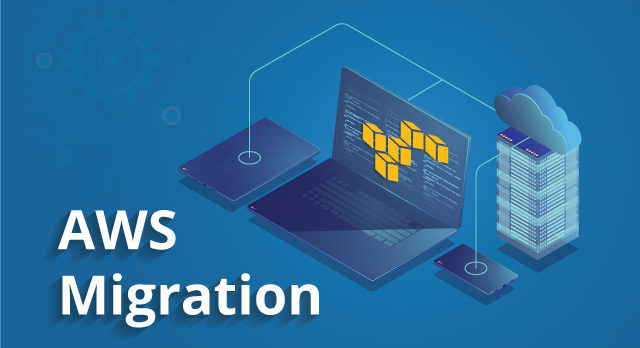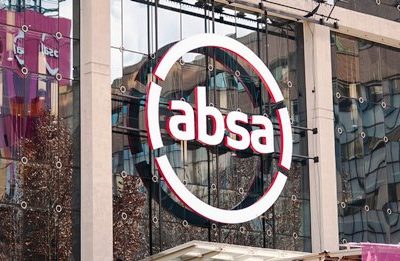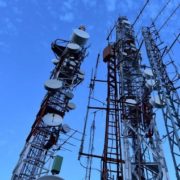By Mark Brindley, Head of Cloud Alliance
Part I of this blogpost discussed the advantages of migrating to the AWS cloud and five of the biggest cloud migration security challenges. Part II addresses how Check Point and AWS work together to address these challenges, and the best approaches to secure organizations’ workloads when migrating to the cloud.
Successful Migration to AWS Using Check Point to Secure Workloads
Migrations from on-premises to private, public, hybrid, and multi-cloud environments have become a common occurrence. AWS (and other cloud providers) discuss several migration strategies, including variants of “lift-and-shift” and purchasing different products for the cloud. In these migration approaches, the documents focus on getting the data, applications, and functionality to the cloud—not the security of the workloads. This may be why organizations sometimes view security as an inhibitor to cloud migration. For these companies, sensitive workloads stay in traditional datacenters, even if the cloud would improve performance or save costs.
RELATED: Secure Your Migration to AWS, Part I: The Challenges
To help address these concerns, Check Point has developed a comprehensive set of security offerings that enhance AWS functionality, making security an enabler of digital transformation. The combination of AWS-native tools with Check Point CloudGuard, a unified security management platform, helps businesses maintain high security standards and avoid potential breaches.
Detect and Remediate Misconfigurations
As mentioned in Part I, misconfigurations represent a significant cloud security challenge. The best practice for this issue is to implement a solution that can not only detect misconfigurations and inconsistent application of security policy, but actively and automatically remediate the problems. Check Point’s CloudGuard Posture Management can detect, prevent, and remediate misconfigurations and security policy inconsistencies, and works across AWS, hybrid, and multi-cloud environments to achieve continuous compliance.
Gain Visibility
During cloud migration, organizations can lose asset visibility. In such a dynamic environment, with constant changes making assets spin up or shut down, maintaining compliance and governance can be a challenge. CloudGuard’s dashboard enables visibility across AWS and hybrid/on-premises environments, and runs queries to assess the configuration of your cloud environment early on.
Enhanced Protection for Today’s Threat Landscape
To address network traffic issues and advanced threat prevention, experts recommend solutions that provides both North-South and East-West protection of cloud assets. Another best practice is a unified management console that provides consistent policy application everywhere. CloudGuard Network Security provides this level of protection and control, with an industry-leading cloud security gateway and unified security management.
Application Security Strengthened by Contextual AI
As more applications are built for or ported to cloud environments, web functionality and APIs multiply in organizations’ environments. Web application firewalls (WAFs) have been outpaced by the needs of business, resulting in heavily customized rulesets and frequent false positives. Instead of a traditional WAF, the best practice is to implement context-based artificial intelligence that requires a fraction of the administrative effort—and minimizes false positives. CloudGuard meets these requirements, with contextual AI to prevent threats with absolute precision, but without any human intervention as an application is updated. Security automation and orchestration help to effectively implement consistent protection across companies’ AWS environments.
A recent example is the outbreak of the critical Log4j vulnerability, which affected more than half of all websites worldwide. CloudGuard provided pre-emptive protection for web applications against the Log4j vulnerability, validating the need for an automated, AI-powered solution.
DevSecOps Automation
Development using the latest Lambda, serverless, and container technologies is a game-changer for many organizations. Unfortunately, without an underlying structure in place, serverless instructions don’t have the restrictions they do in other development environments—and bad actors can take advantage. To combat this, best practices include the enforcement of least-privileged access rights, real-time threat detection and blocking, and ensuring container integrity with active threat protection. This kind of automation is key to supporting the speed required for development—all while building security into the functionality from the start. CloudGuard supports this best practice with workload and container security enhancements that empower, automate, and streamline DevSecOps to provide end-to-end protection from CI/CD to runtime.
Summary
Prioritizing security is fundamental to successful cloud migrations. You can address the key challenges through planning and management, as well as implementing solutions that support expert recommendations and best practices.
CloudGuard offers security solutions that enhance existing AWS security functionality and help customers migrate to the cloud with confidence. You can deploy CloudGuard in minutes from the AWS Marketplace.
Whether proactively repairing security settings, defending against advanced threats, or protecting against zero-day exploits, Check Point and AWS make it easier for you to securely migrate workloads to the cloud. Make security in your organization an enabler. Sign up for a free consultation to secure your cloud workloads with confidence, everywhere.





























